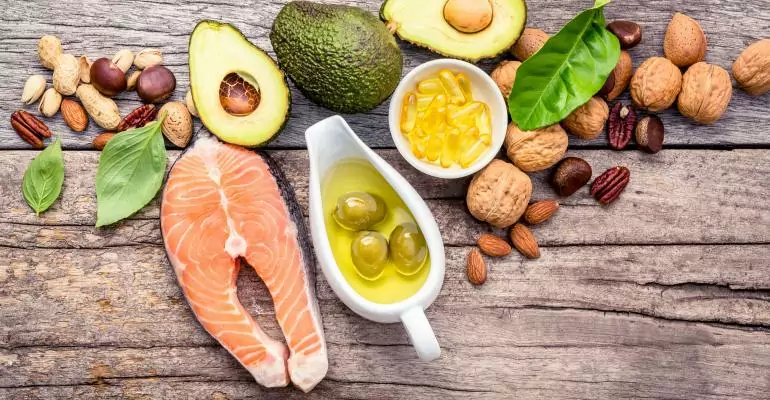
Fatty acids belong to a category of biological molecules called lipids (or fats), which are generally water-insoluble but highly soluble in organic solvents. Chemically, a fatty acid is a non-polar long aliphatic hydrocarbon molecule chain that has an acidic carboxylic acid group (COOH) at one end of its molecule, and a methyl group (CH3) at the other end, which is designated omega or ω. The COOH being at one end is what makes these molecules acids. Most naturally occurring fatty acids have an unbranched chain of an even number of carbon atoms (from four to 28). They have the general structure of CH3(CH2)nCOOH.
Fatty acids are derived from both animal and vegetable fats and oils. They are a necessary part of nutrition, and have uses outside the body (such as lubricants, cooking, soaps, detergents and cosmetics).
Fatty acids can be categorized in various ways, although they are primarily categorized through the degree of saturation or variation of chain length.
A saturated fatty acid has no double bonds. Saturated fatty acids are solid at room temperature, have high melting points and are common in animal and plant fats.
Read The Full Article HERE




